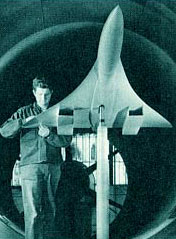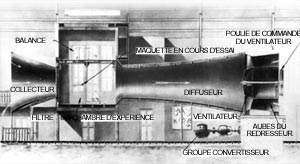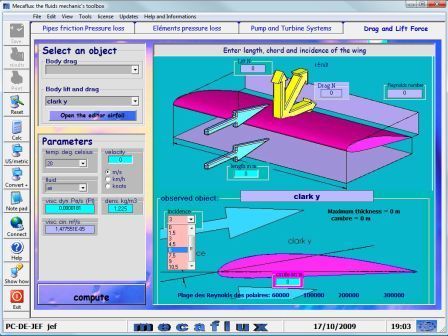
We will see in this lesson a few aerodynamic concepts.
Other links further information: the propeller fan and blower , the calculation of propeller, and software propeller calculation
When an object is immersed in a fluid stream, there is phenomena of friction and turbulence.
-
when the fluid is air, the study of these phenomena is the aerodynamics.
-
when the fluid is water, the study of these phenomena is the Hydrodynamics .
In the air , effects of friction are studied experimentally in wind tunnel.
it is in a wind tunnel that Cd ( aerodynamics coefficient of drag) and CL (coefficient lift ) Is studied according to the Aifoils or hydrofoils .
These results are often represented as Polar

concord testing

wind tunnel eiffel
(the engineer who created the tower devoted the rest of his life in aeronautics research)

NASA wind tunnel
From these experiments are derived information linking fluid characteristics and tested object.- The fluid characteristics are its viscosity , speed , And density
- characteristics of the object are its width, length, form, roughness, angle of incidence, its frontal area
- Cd (drag force coefficient) p is the density fluid Kg/m3 The S front surface m² v the relative velocity of the fluid * m / s
-
Drag= CD* p * s * (v²/2) become : Cx= Traînée/(p* s * (v²/2))
Drag in Newtons
- Cl (Lift force coefficient)
The Cz is the coefficient of lift, it is determined experimentally in wind tunnels or basin
p is the fluid density Kg/m3
S the projected surface ground m²
v the relative velocity of the fluid m / s
- Lift force=Cl * p * s * (v²/2) Become : Cl= Lift force/(p x s x (v²/2))

Calculation of drag and lift, of an airship hull, submarine or boat with the software HELICIEL
mecaflux is a simplified software, calculation of wing or sail.
HELICIEL is a software wing propeller calculation sail more complete.